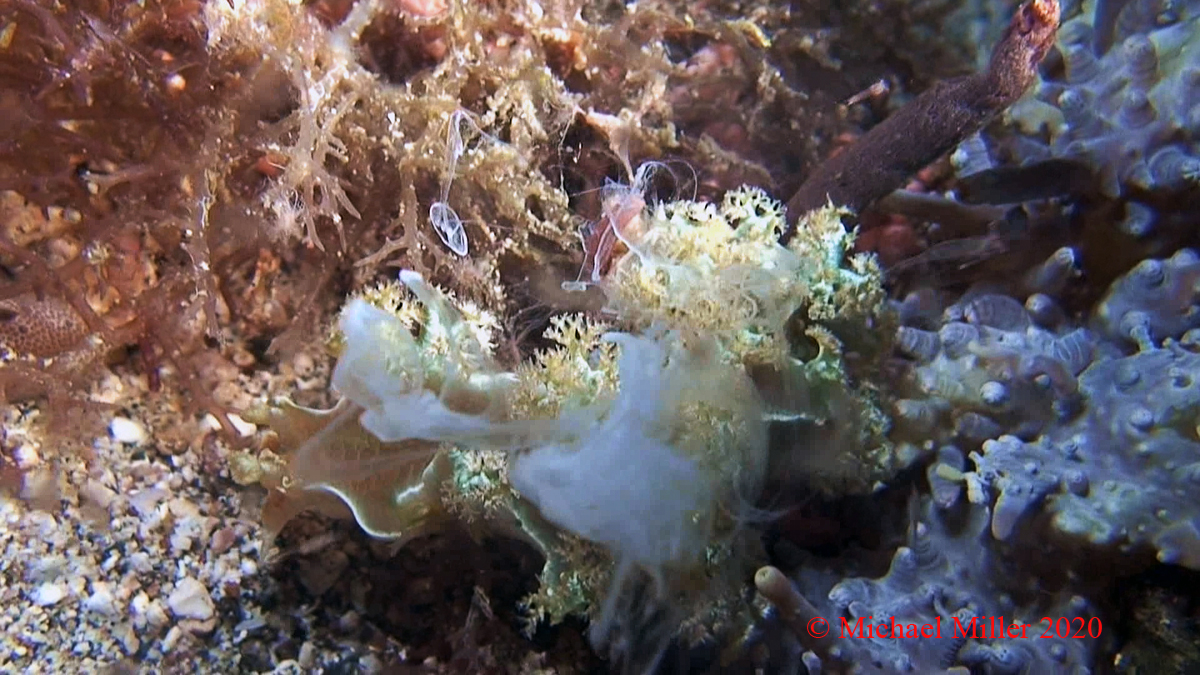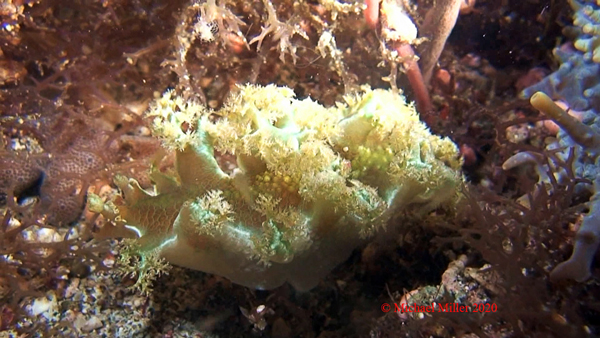 |
Marionia cf. distincta
Image courtesy of Michael MillerAnilao, Batangas, Philippines
Freeze Frame from Video
2015
Image courtesy of Michael Miller (Webmaster)
 | Marionia cf. distincta Bergh, 1905
Mike has captured an interesting behavior for this cryptic species. Apparently Mike disturbed the critter to the point that it released defensive chemicals from its cerata. The mere volume of the secretion, seen in Mike's photo is amazing. Think it was pissed? Boy - if a fish got a mouthful of this, it would react violently to escape, and never try that again. Tritonia and Marionia are differentiated internally, the former lacking stomach plates, which makes distinguishing between these two genera problematic. We are guessing that the identification of this species is M. distincta, but it is a little hard to tell for sure. M. distincta is white to cream with a series of brown traverse lines on the smooth notum. Normally it has black spots at the base of the finely branched secondary gills. The frontal veil has four pairs of slightly branched velar appendages. This cryptic species matches its xeniid soft coral prey identically.
Sammamish, WA 98074 Apr. 2020 Send Dave email at davidwbehrens@gmail.com |

Attention all you Sluggers, and you know who you are! The NSSI 2nd edition is available in ebook PDF and book form . The hard back version will become available Nov. 1st. Both will cost $65 (individually). You will need to jump through a few hoops to get the electronic version as pdf distribution is protected by Adobe ID!! Please read the following to enable reading your electronic purchase! This new 2nd Edition is updated and reorganized, including 185 new species. Among other features, the new edition includes additional photographs of species, an identification key, and an up-to-date classification reflecting the latest evolutionary relationships. The Indo-Pacific represents the largest expanse of tropical ocean in the world, stretching from the Indian Ocean coast of southern Africa and the Red Sea to the central Pacific of the Hawaiian Islands, Easter Island and the Marquesas. This region supports the most diverse marine fauna of any place in the world for most groups of marine organisms. The nudibranchs and sea slugs are no exception to this rule; there are about 3,000 described species of these organisms in the world and at least 40% of these have been found exclusively in the Indo-Pacific tropics. This book illustrates 2,138 Indo-Pacific nudibranchs and sea slugs, including many undescribed species.
|
